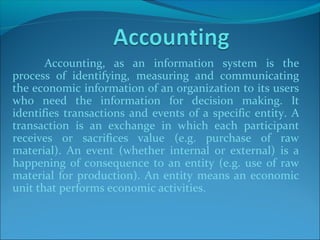Accounting involves identifying, measuring, and communicating the economic information of a business entity to its users. It records transactions and events to determine the entity's financial position. Accounting identifies assets, liabilities, and equity through a system of debits and credits according to the dual aspect concept. The accounting process provides information to owners, managers, creditors, government, and others for decision making.























